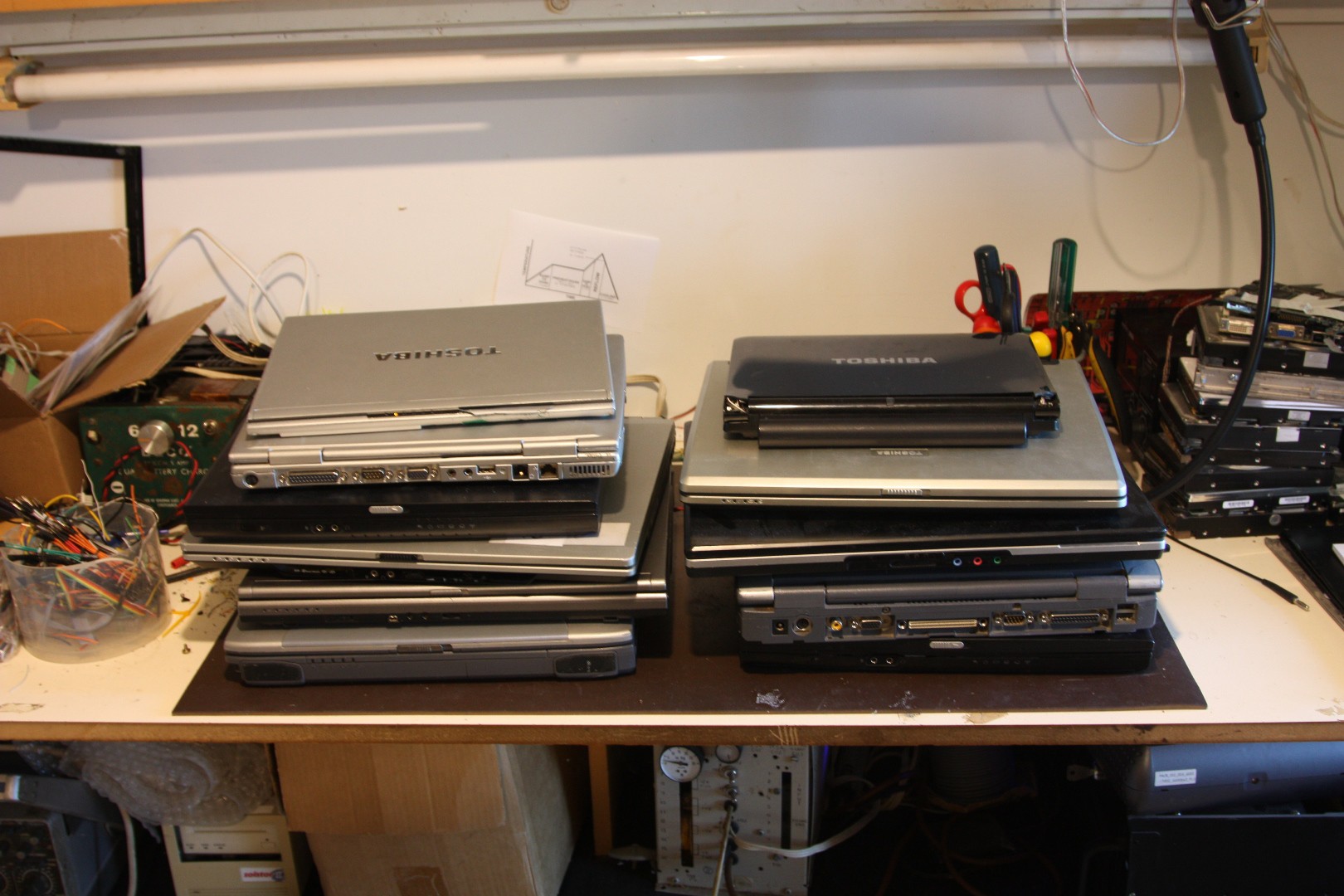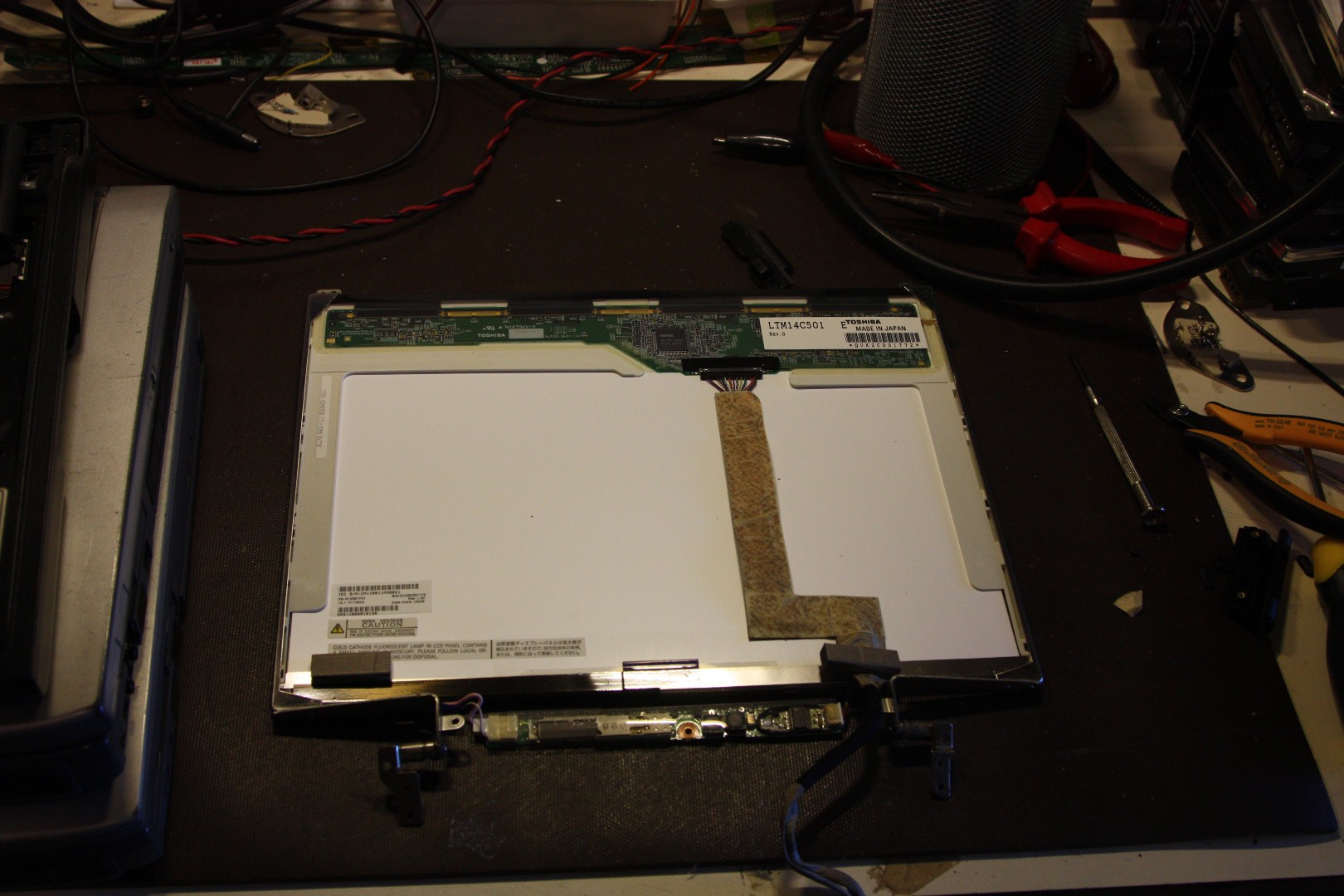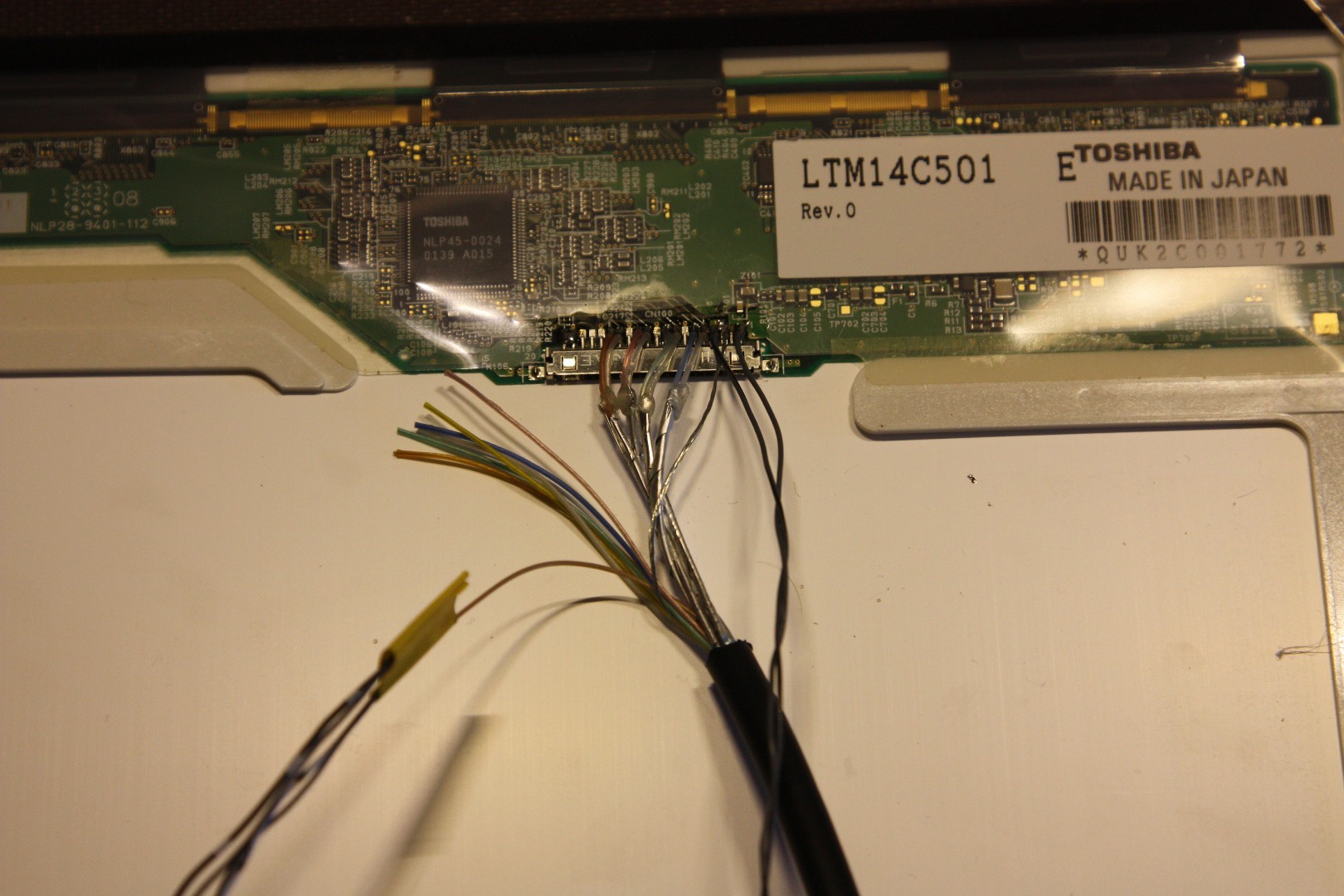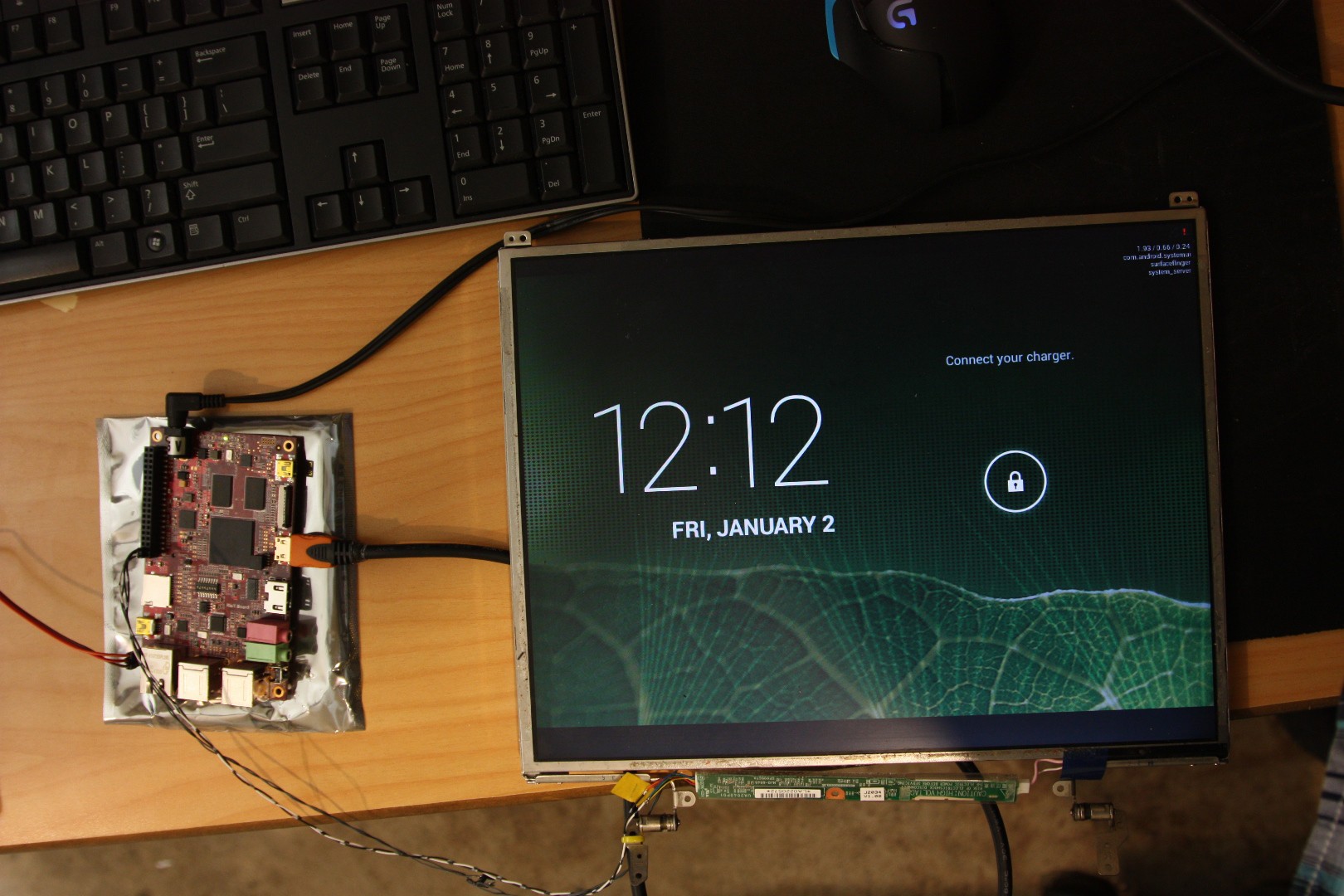So my Dad has a big collection of old laptops gathering dust, most of them running XP or older. I wondered whether it would be possible to extract the LCD out of one and perhaps use it with something like a Raspberry Pi? I remember seeing people wonder this on old forum posts in the past and the common answer was "it's not possible, they use LVDS".
Times have changed since then, and it is indeed possible, and a lot easier than I thought it would be! To start off easy I decided to get a RIoT Board, based on an iMX6 Solo ARM A9 processor, which has a native LVDS interface!
To start off my experiment, I extracted an LCD panel out of a suitably broken laptop:
The backlight driver wasn't quite so easy, but after a bit of probing around I got it to power up the fluorescent tube. Interestingly it only required 5V to power up.
The RIoT board provides its LVDS signals through a micro-HDMI connector (It is not actually HDMI!), so I chopped an old cable and soldered it directly to the panel (since the laptop was broken anyway):
The other wires are for backlight dimming and a touch screen display, none of which are required to display an image.
And after reconfiguring the RIoTBoard to output video on the LVDS connector, success!
My next experiment is a lot more complex: I have a newer "transflective" LED-backlit LCD display out of an old Portege R500. These screens are special in that they are sunlight readable! But their connector is very very fine and the backlight requires +30V to drive, which makes things difficult. My post on this will be coming soon!
 Jared Sanson
Jared Sanson



Discussions
Become a Hackaday.io Member
Create an account to leave a comment. Already have an account? Log In.